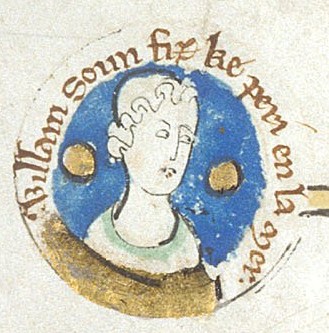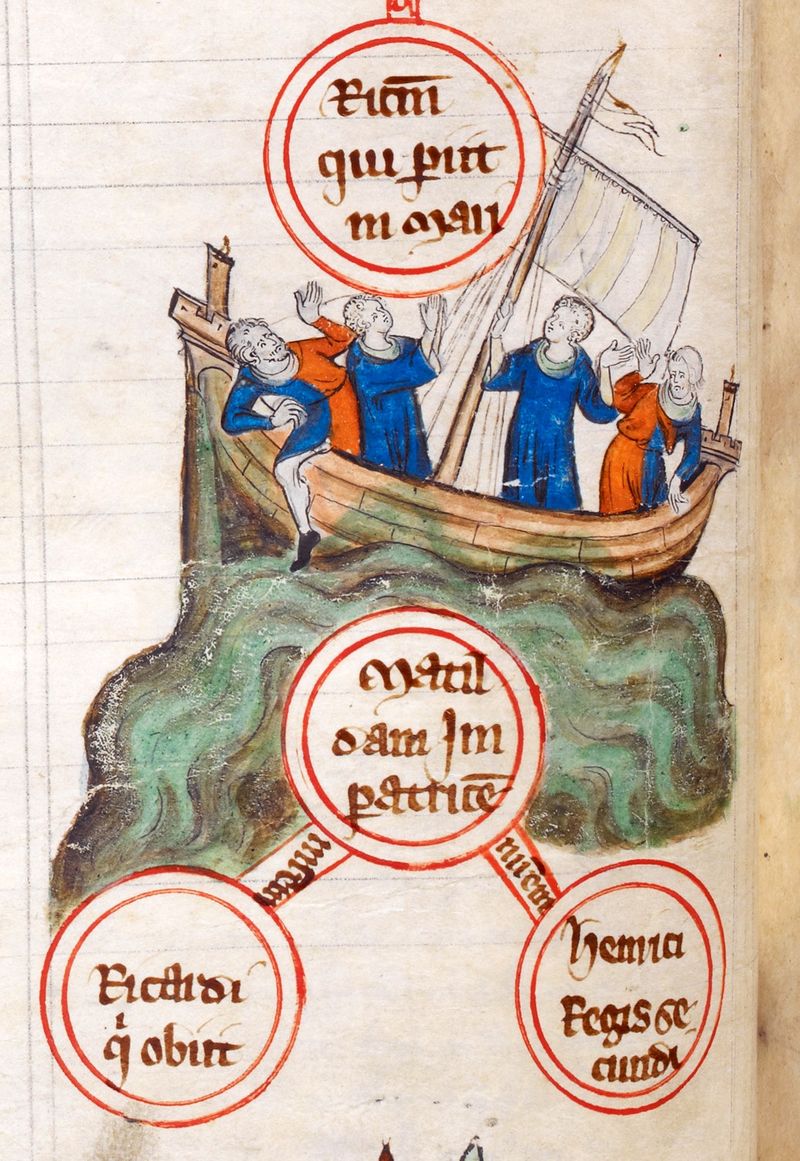by Susan Flantzer
© Unofficial Royalty 2022

William Ætheling; Credit – Wikipedia
Born on August 5, 1103, in Winchester, England, William Ætheling was the only son and the second of the two children of Henry I, King of England and his first wife Matilda of Scotland. In Anglo-Saxon England, Ætheling was used to designate males of the royal dynasty who were eligible for the throne, and by using Ætheling as part of his only son’s name, Henry I was making a connection to the Anglo-Saxon kings, the dynasty his father William I, King of England, the Conqueror, had defeated in 1066 to obtain the English throne. William Ætheling’s paternal grandparents were William I (the Conqueror), King of England and Matilda of Flanders. His maternal grandparents were King Malcolm III of Scotland and Saint Margaret of Scotland, born an Anglo-Saxon princess.
William had one elder sister:
- Matilda (1102 – 1167), married (1) Heinrich V, Holy Roman Emperor, no children (2) Geoffrey V, Count of Anjou, had three sons including Henry II, King of England
Besides being King of England, Henry I was also Duke of Normandy, now in France. To secure the loyalty of the County of Anjou, a long-time rival of the neighboring Duchy of Normandy, Henry betrothed his son William to Matilda of Anjou, the eldest daughter of Fulk V, Count of Anjou and his first wife Ermengarde, Countess of Maine in February 1113. The nearly sixteen-year-old Willam and the thirteen-year-old Matilda of Anjou were married in June 1119 in Lisieux, Duchy of Normandy. The marriage would only last a year and the couple had no children.
Because the Kings of England at that time were also the Dukes of Normandy, they were often in Normandy, and this was the case in November 1120. After the successful military campaign in which King Henry I of England defeated King Louis VI of France at the Battle of Brémule, the English were finally preparing to return to England. King Henry I was offered the White Ship for his return to England, but he had already made other arrangements. Instead, Henry suggested that his son William Ætheling sail on the White Ship along with his retinue which included William’s half-brother Richard of Lincoln, his half-sister Matilda the Countess of Perch, who were two of King Henry I’s 25 or so illegitimate children, along with Richard d’Avranches, 2nd Earl of Chester, and many of the heirs of the great estates of England and Normandy.

The sinking of the White Ship; Credit – Wikipedia
17-year-old William Ætheling and his retinue boarded the ship in a festive mood and barrels of wine were brought on board to celebrate the return to England. Soon both passengers and crew were inebriated. By the time the ship was ready to set sail, there were about 300 people on board. William and his retinue ordered the captain of the White Ship to overtake the ship of King Henry I so that the White Ship would be the first ship to return to England. Unfortunately, the White Ship hit a submerged rock and capsized. William’s bodyguard quickly got the heir to the throne into the safety of a dinghy. However, William Ætheling heard the screams of his half-sister Matilda and ordered the dinghy to turn back to rescue her. At this point, the White Ship began to sink and the many people in the water desperately sought the safety of William’s dinghy. The chaos and the weight were too much causing William Ætheling’s dinghy to capsize and sink without a trace. The chronicler Orderic Vitalis claimed that only two people survived the shipwreck by clinging to a rock all night.
William Ætheling’s wife Matilda of Anjou was on another ship at the time of the wreck. After her husband’s death, Matilda remained at King Henry I’s court and was treated as one of his daughters. Henry I offered to marry Matilda to one of his great nobles. However, after staying in England for several years, Matilda wished to return to her birthplace of Anjou. Eventually, Matilda took the advice of Geoffrey of Leves, Bishop of Chartres, and took vows as a nun at Fontevrault Abbey in Chinon, Anjou in 1128. She became Abbess of Fontevrault Abbey in 1150 and died there in 1154, the same year her nephew Henry, Count of Anjou became King Henry II of England.
King Henry I holds the record for the British monarch with the most illegitimate children, 25 or so illegitimate children, but the tragedy of the White Ship left him with only one legitimate child, his daughter Matilda. Henry I’s nephews were the closest male heirs. In January 1121, Henry married Adeliza of Louvain, hoping for sons, but the marriage remained childless. On Christmas Day in 1226, King Henry I of England gathered his nobles at Westminster where they swore to recognize his daughter Matilda and any future legitimate heir she might have as his successors. That plan did not work out. Upon hearing of Henry I’s death on December 1, 1135, Stephen of Blois, one of Henry’s nephews, quickly crossed the English Channel from France, seized power, and was crowned King of England on December 22, 1135. This started the terrible civil war between Stephen and Matilda known as The Anarchy. England did not see peace for more than 18 years until Matilda’s son acceded to the throne as King Henry II of England in 1154.
This article is the intellectual property of Unofficial Royalty and is NOT TO BE COPIED, EDITED, OR POSTED IN ANY FORM ON ANOTHER WEBSITE under any circumstances. It is permissible to use a link that directs to Unofficial Royalty.
Works Cited
- En.wikipedia.org. 2022. Matilda of Anjou – Wikipedia. [online] Available at: <https://en.wikipedia.org/wiki/Matilda_of_Anjou> [Accessed 11 July 2022].
- En.wikipedia.org. 2022. William Adelin – Wikipedia. [online] Available at: <https://en.wikipedia.org/wiki/William_Adelin> [Accessed 11 July 2022].
- Flantzer, S., 2015. King Henry I of England. [online] Unofficial Royalty. Available at: <https://www.unofficialroyalty.com/king-henry-i-of-england/> [Accessed 11 July 2022].
- Flantzer, Susan, 2015. The Sinking of the White Ship and How It Affected the English Succession. [online] Unofficial Royalty. Available at: <https://www.unofficialroyalty.com/november-25-1120-the-sinking-of-the-white-ship-and-how-it-affected-the-english-succession/> [Accessed 11 July 2022].
- Spencer, Charles, 2020. The White Ship: Conquest, Anarchy and the Wrecking of Henry I’s Dream. London: William Collins.
- Williamson, David, 1996. Brewer’s British Royalty. London: Cassell.
